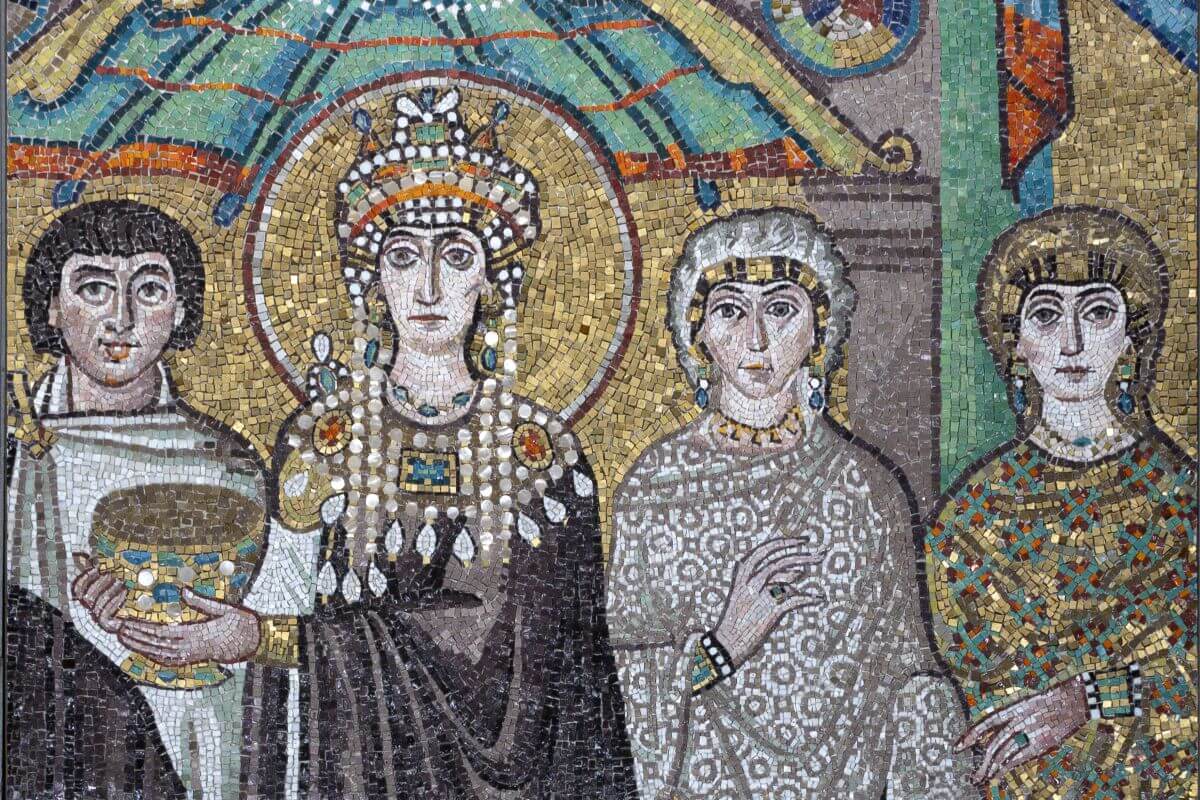
Mausloeum of Galla Placidia
The Mausoleum of Galla Placidia, built in 425 A.D., with its unique early Christian mosaics, is one of the eight amazing UNESCO World Heritage sites in the city of Ravenna.

This extraordinary mosaic captures a timeless image of Theodora and her court. The scene is interpreted as Oblatio Augusti et Augustae, in which the imperial couple offers the patera and chalice for the consecration ceremony of the church.
The figures seem to float on a green carpet beneath an abstract golden sky, advancing in a symbolic and silent procession. At the centre, Theodora is adorned with all the symbols of power: a purple robe, a tiara adorned with pearls, gold and precious stones, with pendilia cascading down, and the maniakion, a large breastplate embellished with pearls, gold and gems. The ladies of the court, portrayed with stereotypical features – except for the two figures behind the Empress, identified as Antonina and Giovannina, wife and daughter of Belisarius – wear fine silks of Eastern origin with elaborate embroidery and flaunt rich jewellery and hairstyles. The procession is led by a man drawing back a curtain – for some scholars, the door represents the entrance to the Basilica of San Vitale itself. The entire composition is in harmony with the celestial scene in the apse, where Saint Vitalis and Bishop Ecclesius are received by Christ.
Select a language
Selected
Other languages